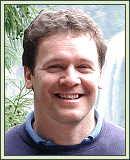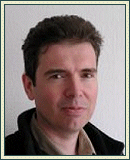| Link to Home Page |
||
|
AI Factory is an independent UK-based company, with headquarters in Pinner, near London, which was incorporated in April 2003, company number 04721316. Since then we have gone from strength to strength, building on our basis of PC games, and branching out into mobile, console and IFE, with a total of 38 published titles to our name. Most of these have been entirely developed in-house but also include many instances where other 3rd party developers have licensed our AI game technology. Our game engines are used by the smallest through to largest companies (including Microsoft). Our specialisation in AI excellence is backed by many years experience, and this has been used to create a generic game AI architecture that is easily ported to any platform.
Meet our people below! |
||
|
Founders
|
||
 |
Jeff Rollason - CEO and Founder
|
|
|
Jeff has been involved in the games industry since 1981 and
provides the AI core for the bulk of the engines. His background of 17 years lecturing in Computer
Science at Kings College, London, and record of entering 15 Computer World Championships in Chess and
Shogi (in 2 years ranking world #3), provides a solid basis for creating game engine AI. Added to this
Jeff also coordinates all of AI Factory's activities and oversees all project work.
He still publishes, referees and presents papers
in academia, but is now a full time committed member of the games
industry.
|
||
 |
Dan Orme - Technical Director and Founder
|
|
|
Dan provides core expertise
in 3D programming, based on DirectX, OpenGL and shader programming.
With mobile games becoming increasingly important, AI Factory also
depends on Dan to drive work in this area, so he heads up both 3D
and mobile development.
His strong general interest in all gaming, and
his depth of experience with video games, provides a valuable resource
for driving our development. This allows him to also make substantial
contributions in areas of interface style and game playability,
having insight into the mind set of the computer gamer.
|
||
 |
Kirstie Berry - Artistic Director and Founder
|
|
|
Kirstie heads up all 2D artwork, 3D modelling and web design at AI Factory. Her in-depth knowledge of 3D Studio Max, Lightwave and other packages provide the experience needed to drive all our graphics. With 16 years in this field she has many game titles to her CV, and has since added a further 22 with new titles for AI Factory's repertoire.
Game aesthetics are critically important, so
we take this as seriously as our AI. It is Kirstie's expertise that
creates the lavish environments of our games, and it is her job
to ensure that all our graphics are better than the competition!
|
||
|
Contributing Engineers
|
||
 |
Tony Warriner - Associate Engineer
|
|
|
Tony first began creating
games for home computers, such as the Sinclair Spectrum, back in
the mid 1980's. He now has over twenty years of experience in designing
and programming games across many varied platforms. In 1990 Tony
helped found Revolution Software which went on to produce a number
of cult classic adventure games, such as Beneath a Steel Sky and
the Broken Sword series. In 2002 he undertook the insane task of
porting double-CD game Broken Sword to the Game Boy Advance, and
managed it with 6 bytes to spare.
|
||
 |
Mick Reiss - Associate Engineer
|
|
|
Dr Michael Reiss is the author of the world's
best selling Go software. His program Go++ has placed in the top
three in just about every computer-go tournament since 1987. Currently
his program is ranked number one in the world having won the world
championships three times in recent years.
His Go engine has been incorporated in many
PC implementations and also Playstation 2, Playstation 1, mobile
networked version, Sega Saturn, Palm, Symbian, PocketPC, Mac and
web-based servers.
|
||
 |
Andrew Bracher - Associate Engineer
|
|
|
Andrew has been authoring Computer Bridge software
for over 15 years, and has maintained his status as an independent
developer, providing the engines for the highly successful "Oxford
Bridge" and AI Factory's "Omar Sharif Bridge" products.
He has competed in World Computer Olympiad events
since the late 1980s, with some marked success, coming joint top
among 7 computer Bridge programs, just behind the human World Champion
in the same event.
|
||
 |
Andrew Ray - Associate Engineer
|
|
|
Andrew was a co-founder
and has therefore been involved in the company since the inception,
and contributed much work on early titles. He moved on in November 2004 and now provides
external support as needs arise and adds extra width to AI Factory's
technical knowledge. He has a diverse background in physics, image
processing, internet programming, mobile/PDA programming, and C++
since 1984. He has many PC and PDA game titles to his name, both
within AI Factory and previous positions in the games industry.
His speciality in games is Bridge, where he
is an active player and was responsible for the bulk of the coding
of "Omar Sharif Bridge II".
|
||
 |
Reijer Grimbergen - Associate Engineer
|
|
|
Reijer is a professor at the School of Computer Science of the Tokyo
University of Technology,
specialised in Cognitive Science and Game Programming.
He is
a former European Shogi Champion and the author of the shogi program
SPEAR, developed over the last 10 years. In this time he has also
been
connected with the development of AI Factory's Shogi engine Shotest,
as
these two programs have been developed in parallel. He has also
contributed to our newsletters. Reijer is now directly contributing
to
our latest Shogi program, including the creation of an on-line tutorial
system for teaching Shogi.
|
||
 |
Hiroshi Yamashita - Associate Engineer
|
|
|
Hiroshi Yamashita has been working in Computer
Shogi and Go for several years. His Shogi program has impressively
3 times been the World Computer Shogi Champion, and has also been
a Computer Olympiad Gold medallist. He has his Shogi product on
the market under the name AI Shogi and is now also involved with
AI Factory with his Aya Go program. Shogi is a difficult game, harder
than Chess, but Go is much harder still. Aya is based on the difficult
premise of solving Go using search trees.
|
||